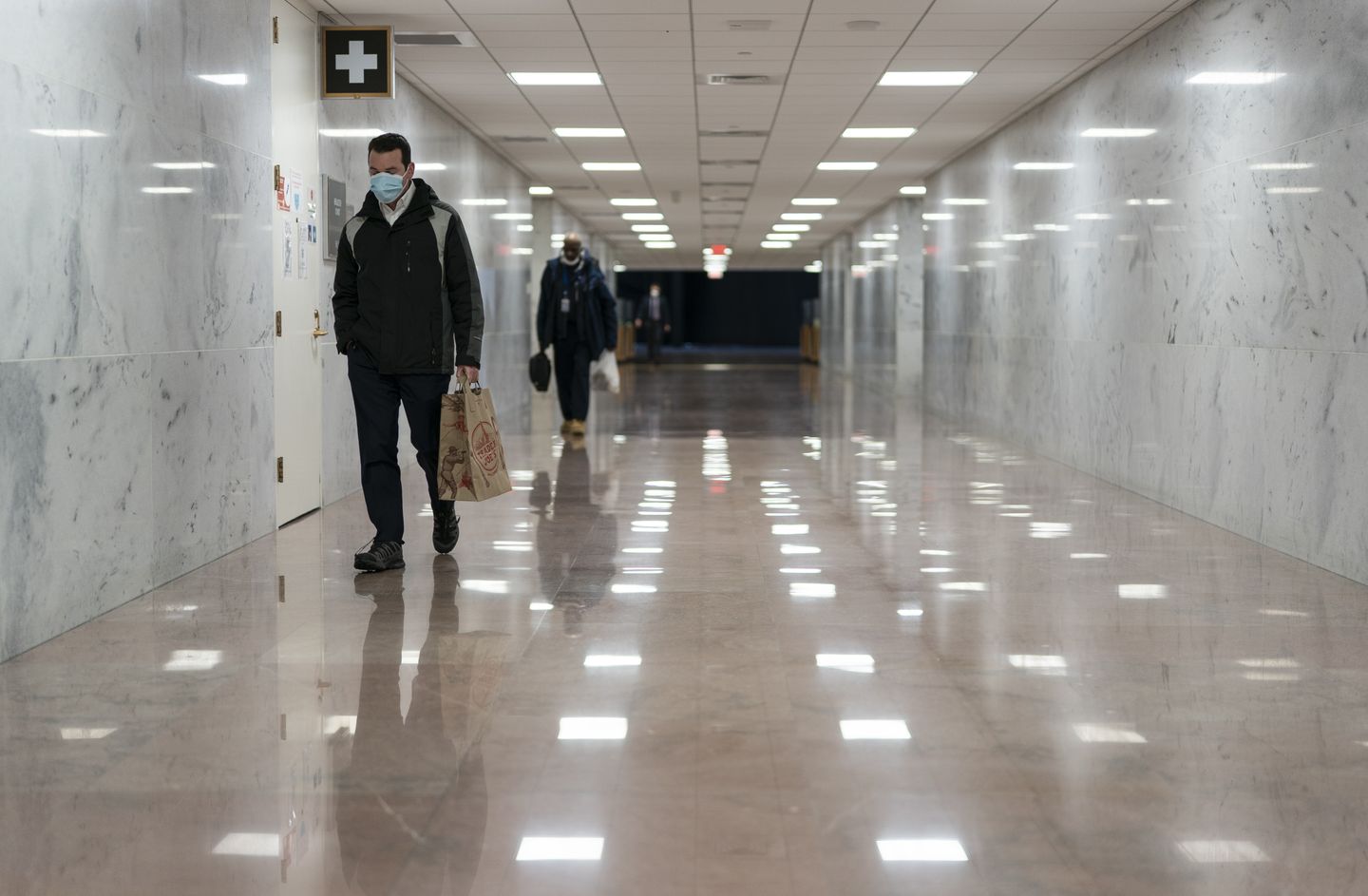
Federal workers are now showing up in their offices more than private-sector workers, with the lowest level of government employees teleworking since before the pandemic, according to the latest data from the Bureau of Labor Statistics.
The April jobs report shows that 81.8% of federal workers said they did not work at home for pay versus 79.2% in the private sector, meaning more federal workers decided to return to the office rather than risk being out of a job.
Some 11% of private-sector employees worked “some hours” from home, compared to 8.5% of federal workers. The Labor Department found that 9.8% of private-sector employees “teleworked all hours” compared to 9.7% of federal workers.
Those numbers represent a marked decrease from last year under President Biden. In April 2024, 68.5% of federal workers said they did not work at home for pay, which was on par with the private sector.
During the same month, 19.8% of federal workers said they worked “some hours” from home compared to 10.5% in the private sector. Also in April 2024, 11.5% of federal workers said they teleworked “all hours” compared to 9.9% in the federal workforce.
At the end of 2024, 20.6% of federal workers said they had teleworked “some hours” while 13.1% teleworked all hours, the Labor Department found.
“President Trump promised to make our federal government more accountable, transparent and efficient. The Trump administration is delivering on this promise by making federal employees return to the office and better serve the American people,” White House spokesman Kush Desai said in a statement to The Washington Times.
The president ordered roughly 3 million federal workers back to the office five days a week with an executive order on his first day in office in January.
Mr. Trump argued then that teleworking needs to stop “because, as everyone knows, most of the time they’re not working, they’re not very productive and it’s unfair to the millions of people in the United States who are in fact working hard from job sites and not from their home.”
“As federal employees, they must be held to a high standard,” he said. “They’re representing our government, they’re representing our country.”
He said workers must return in person or be fired.
The president’s mission to get all federal workers back to the office coincided with efforts to shrink the size of the federal workforce with the help of Elon Musk and the Department of Government Efficiency.
The Trump administration directed federal agencies to initiate large-scale layoffs and create reorganization plans. Thousands of probationary employees were fired and thousands of other workers across multiple agencies have been laid off.
Tens of thousands of federal employees were offered buyouts and roughly 77,000 have accepted.
Mr. Musk sent emails to federal employees demanding a list of what they’ve accomplished in their roles as a way to justify their employment. A failure to respond was interpreted as a resignation.
Mr. Trump extended the federal hiring freeze that he put in place in January until July, which the White House called a “critical step in shrinking the federal government and ensuring taxpayer dollars are used efficiently.”
Once the freeze ends, agencies will be able to hire only one employee for every four who leave.
A tracker by the New York Times shows that at least roughly 56,000 positions have been cut, while nearly 150,000 more positions are planned to be on the chopping block.
Agencies such as the U.S. Agency for International Development and Voice of America have been completely drained. The Department of Education has been reduced by nearly 50% and the Health and Human Service Department by roughly 24%.
Other agencies that have faced at least a 10% reduction include the National Science Foundation, the Consumer Financial Protection Bureau, the IRS and the Energy Department, among others.
However, some of those terminations have been tied up in the courts. The Supreme Court this week blocked a lower court’s order requiring the Trump administration to rehire 16,000 probationary employees.
















